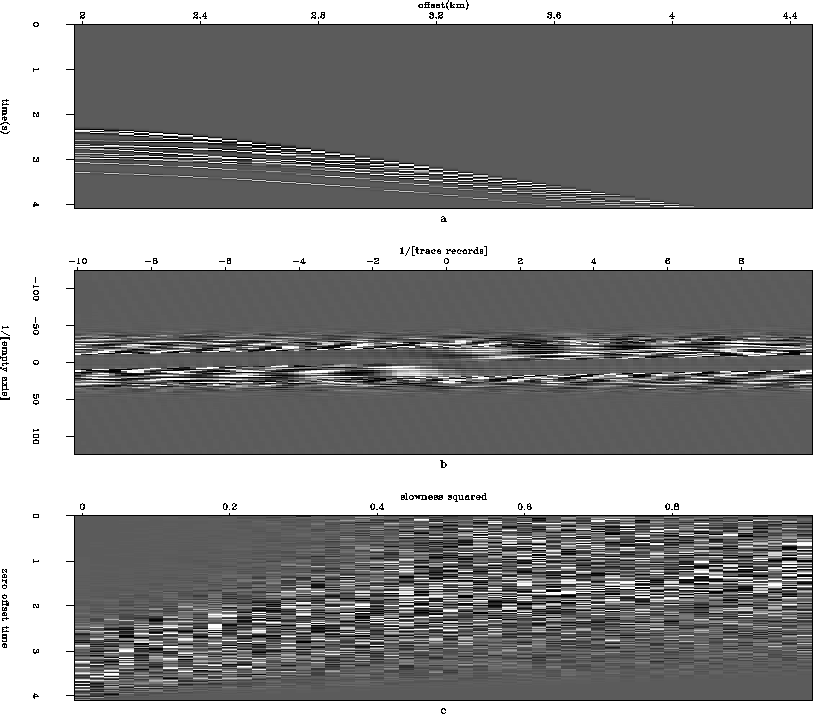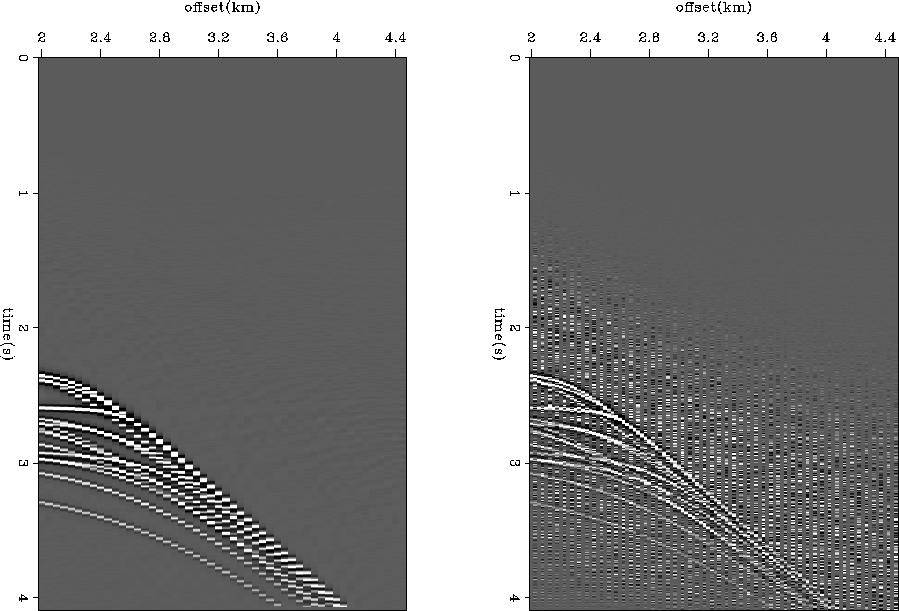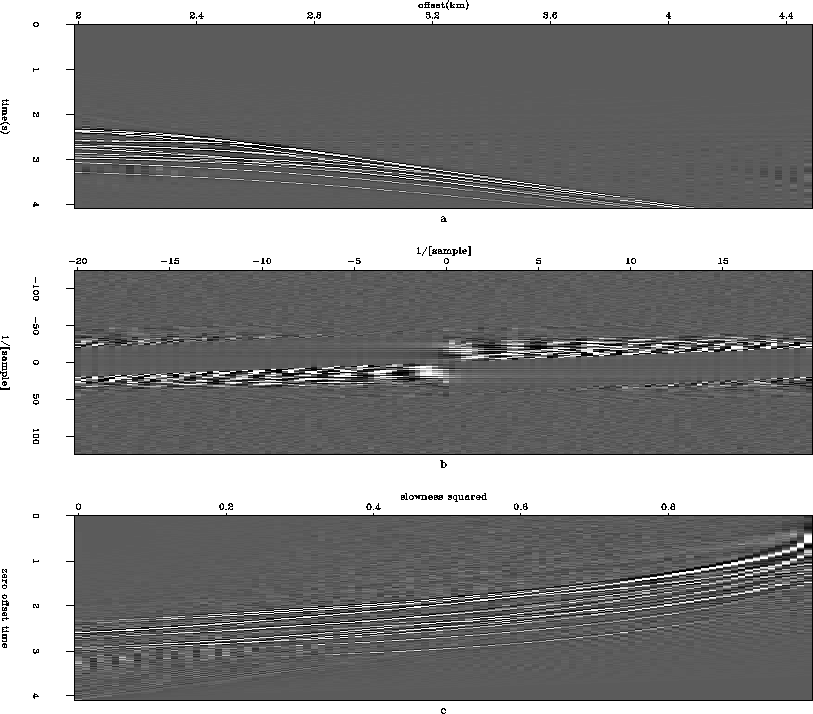 |
Figure 2 Input synthetic CMP gather (a), 2D Fourier transform (b), estimated velocity spectrum (c).
A 2D synthetic CMP gather was modeled using SEP's Kir_Mod program, and a model made up of point diffractors, to generate data with many dips, and non-hyperbolic 'cheops pyramid' events. This was an important part of this synthetic test: hyperbolas should collapse to points in velocity space, but flat-topped hyperbolas can not collapse perfectly. The synthetic was used as input to the algorithm, with the goal of simply refining the offset spacing, and thus dealiasing the gather. The input synthetic is shown in Figure 2, along with its frequency and velocity spectra; it can be seen that the gather is aliased, and in several regions the aliasing and crossing dips make for a confusing picture, even to the eye.
 |
The gather was first input to the original L2 inversion, without preconditioning. The estimated velocity spectrum was then remodeled into the original data space, and into a resampled data space. The remodeled outputs are shown in Figure 3. Remodeling into the original data space is perfect; crossing, non-hyperbolic events present no trouble. However, the null space effect is painfully obvious in the resampled data space. The new data space has been resampled by a factor of two; every other trace is interpolated, and every other trace has terrible artifacts. Notice that the velocity spectrum is fairly chaotic. This raises some doubt as to whether lowering the norm of the model will, in fact, help, because it is not obvious which values should be spiked.
 |
This same gather was also used as input to the preconditioned inversion, and the gather again remodeled into the same and resampled data spaces. The output is still not free from artifacts, but the artifacts' amplitude is greatly reduced. Further, almost all of the noise that remains is very high frequency and easily removable. The final interpolated output and its spectrum are displayed in Figure 4. Notice that the velocity spectrum is very different from the earlier result. It is pleasing that the non-hyperbolic events do have a parsimonious representation in velocity space. This is good news for the applicability of this type of interpolation.
 |